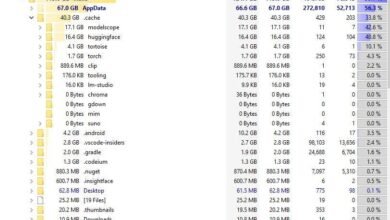Huawei launches HarmonyOS NEXT with new features and lightning-fast file transfer速.

Huawei has announced the launch of the new operating system HarmonyOS NEXT, which comes with a range of enhancements and innovative features aimed at improving user experience. The new system comes with significant improvements in file sharing speed between different devices, making it superior to competing operating systems like Apple’s iOS.
One of the key features offered by HarmonyOS NEXT is the enhanced version of the “Huawei Share” feature, which allows users to transfer files, photos, and videos wirelessly between different Huawei devices using technologies such as Bluetooth, Wi-Fi, and NFC. This system does not require an internet connection to complete the transfer process, providing high efficiency and greater convenience for users.
In terms of performance, comparisons show that HarmonyOS NEXT offers faster file transfer speeds compared to iOS. For example, the system can transfer a 1.2GB file in just 8 seconds, while iOS takes 14 seconds to transfer the same file. This speed makes “Huawei Share” much faster than Apple’s AirDrop feature.
In addition to increased speed, Huawei has improved the file sharing feature to be three times faster than previous versions. These improvements are based on energy-efficient technology and allow users to connect up to 4 devices at the same time, enhancing the ease of file sharing among multiple users simultaneously.
Another new feature in the system is touch sharing, which relies on NFC technology, allowing users to quickly share files by simply bringing devices close to each other without the need for complex settings. This feature is available on all Huawei devices that support NFC, offering a smoother user experience.
It is worth mentioning that the new system only supports applications specifically designed for it, and no longer supports running Android apps as it did in previous versions. Richard Yu, CEO of Huawei’s consumer business, has confirmed that the touch sharing feature will soon be expanded to include smart TVs, tablets, and even cars, making the system more integrated with various devices.




